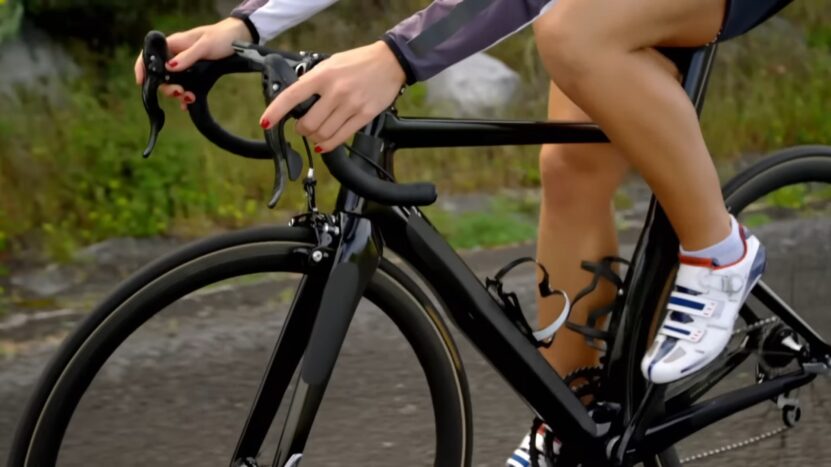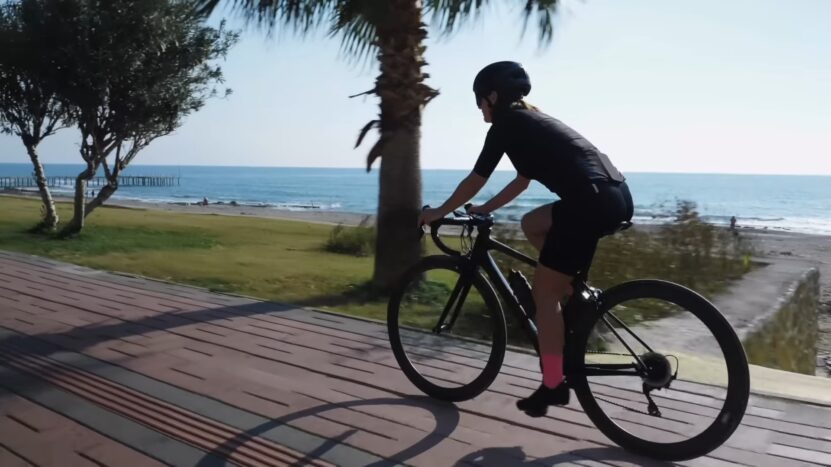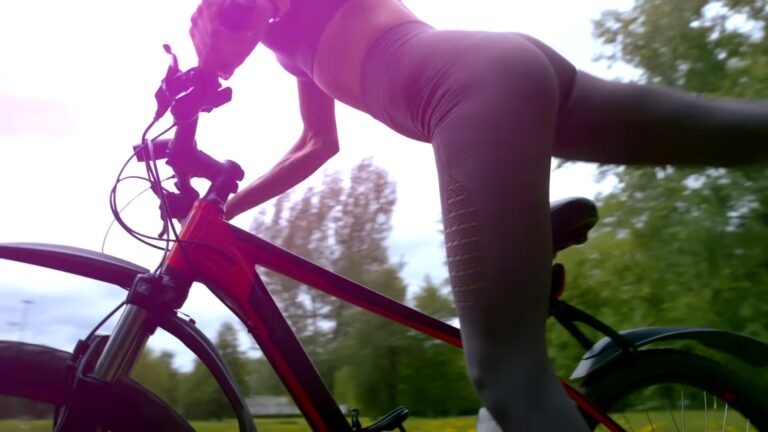I’ve come to realize that one of the most overlooked yet crucial aspects of cycling comfort and performance is the relationship between our sit bones and the bike saddle. The saddle is not just a place to sit; it’s the primary point of contact between the cyclist and the bike.
It’s where power meets the pedal and where comfort can make or break a long ride. Over the years, I’ve studied the anatomy of sit bones, the importance of their measurement, and how this knowledge can guide us in selecting the perfect bike sitting.
This insight is not just about avoiding discomfort; it’s about enhancing the overall cycling experience.
The Anatomy of Sit Bones
The human pelvis is a complex structure, but when it comes to cycling, the most pertinent components are the ischial tuberosities, commonly referred to as the “sit bones.” These bony protrusions bear the brunt of our weight when we sit, especially on a bicycle.
The sit bones are part of the ischium, one of the three major bones that constitute the pelvis. They protrude downwards and slightly outwards from the lowest part of the pelvis. The distance between the sit bones is unique to each individual.
When cycling, the sit bones should be adequately supported to prevent discomfort or injury. A saddle that’s too narrow may cause the sit bones to hang off the sides, leading to pressure on soft tissues. Conversely, a sitting that’s too wide can cause chafing and discomfort.
While there are general trends in sit bone width based on factors like gender and body size, there’s a significant amount of individual variability. This means that two people of the same gender and body size might still require different saddle widths.
Just as our bodies evolve with age, so does the distance between our sit bones. Factors such as weight gain, pregnancy, or even certain medical conditions can alter the spacing. An improperly fitted sitting can lead to discomfort, numbness, and even long-term injuries.
It’s not just about comfort; it’s about ensuring that the body’s weight is distributed correctly across the saddle. While the sit bones are crucial, they’re just one aspect of saddle comfort. Other factors, such as the saddle’s shape, padding, and the rider’s riding style, also play significant roles.
The Distance Between Sit Bones

Getting an accurate measurement of the distance between your sit bones is the first step towards finding the perfect saddle. Here’s how you can conduct the process:
- One of the simplest methods involves a piece of corrugated cardboard. Place the cardboard on a hard surface and sit on it with your feet on the ground and your weight evenly distributed. After a minute, stand up and measure the distance between the centers of the two most pronounced indentations.
- Some bike shops and fitting centers have specialized gel pads that can provide a more precise measurement. These pads, when sat upon, leave clear imprints of the sit bones.
- If you’re serious about cycling, consider getting a professional bike fit. These experts will measure your sit bones and assess other factors, like your riding style and posture, to recommend the best saddle.
Factors Affecting Measurements
| Posture Type | Effect on Sit Bone Spacing |
|---|---|
| Leaning Forward (Racing Posture) | Narrows the distance between sit bones |
| Upright Posture | Widens the distance between sit bones |
While getting an exact measurement is beneficial, it’s also essential to remember that comfort is subjective. Two saddles that fit the same measurements might feel different due to other design factors. As mentioned earlier, the distance between your sit bones can change over time. It’s a good practice to re-measure every few years or if you experience significant body changes.
Selecting the Right Saddle Based on Measurements

Once you have your sit bone measurement, the journey to find the perfect sitting begins. Here’s how to navigate through countless choices:
- Width: As a general rule, the sitting width should be at least as wide as the distance between your sit bones, with some additional space for flexibility and movement. Most manufacturers provide saddles in various widths to cater to different needs.
- Shape: Beyond width, the shape of the sitting can influence comfort. Some riders prefer flat sittings, while others opt for a more curved or contoured design. The right shape often depends on your riding style and the type of cycling you do.
- Material: Saddles come in various materials, from synthetic covers to genuine leather. The choice of material can affect the saddle’s breathability, durability, and adaptability to your body shape.
Padding Preferences
The amount and type of padding can significantly influence comfort. While some riders prefer minimal padding for better pedal efficiency, others opt for more cushioning for longer rides. Many manufacturers offer gender-specific saddles.
While these can be a good starting point, it’s essential to remember that comfort is individual. A saddle designed for one gender might be comfortable for someone of another gender. The best way to know if a saddle is right for you is to test it.
Many bike shops offer test sittings or have a return policy that allows you to exchange if the saddle doesn’t feel right after a few rides. Remember, the perfect saddle is a blend of the right width, shape, material, and padding.
Your sit bone measurement is a starting point, but personal preference and riding style will also play significant roles in your final choice.
Adjusting the Sitting for Optimal Comfort
Once you’ve selected a sitting based on your sit bone measurements, proper adjustment is crucial to ensure maximum comfort and efficiency:
- Height: The height of your saddle can influence how your weight is distributed. If it’s too high, you might overextend your legs, causing strain. If it’s too low, you might put undue pressure on your knees. A general rule is that your leg should be slightly bent at the bottom of a pedal stroke.
- Tilt: The angle at which your saddle sits can affect your comfort. A sitting that tilts too far forward can cause you to slide and put pressure on your hands and wrists. Conversely, a saddle that tilts too far back can cause discomfort in the sit bone area.
- Micro-adjustments: Sometimes, minor tweaks can make a significant difference. Pay attention to any discomfort or pain during rides and adjust accordingly. It might take a few rides to dial in the perfect position.
If you’re unsure about adjustments, consider seeking help from a professional bike fitter. They can provide insights tailored to your body and riding style.
Over time, sitting can shift due to various factors like rough terrains or even regular wear and tear. Periodically check and readjust your saddle to maintain optimal comfort.
The Role of Cycling Shorts and Chamois

While the saddle is a critical component of comfort, the clothing you wear can also play a significant role:
Purpose of the Chamois
Cycling shorts come with a padded insert called a chamois. This padding helps reduce friction, wick away moisture, and provide additional cushioning.
Fit is Key
As is the case with saddles, the fit of your cycling shorts matters. They should be snug but not restrictive. A loose fit can lead to chafing, while overly tight shorts can restrict movement.
Gender-Specific Designs
Just as with saddles, there are gender-specific chamois designs. These designs cater to the anatomical differences between genders, but personal comfort should always be the deciding factor.
Maintenance
Proper care of your cycling shorts can extend their lifespan. Always follow washing instructions, and consider using chamois creams to reduce friction and prevent bacterial growth. As with sitting, it might take trying a few different pairs of shorts to find the one that works best for you.
Consider factors like the thickness of the chamois, the material, and the fit.
Common Mistakes and How to Avoid Them

Even with the right measurements and equipment, mistakes can happen. Here’s how to avoid common pitfalls:
- Ignoring Discomfort: If something feels off, it probably is. Don’t ignore minor discomforts as they can escalate into more significant issues over time.
- Over-tightening Saddle Rails: While securing your sitting is essential, over-tightening can lead to damaged rails or even a compromised structure.
- Assuming One Size Fits All: Just because a sitting works for a friend or is highly rated doesn’t mean it’s right for you. Always prioritize personal comfort and fit.
- Neglecting Maintenance: Regularly inspect your saddle for signs of wear and tear. A worn-out saddle can suddenly become uncomfortable or even unsafe.
- Not Giving It Time: Sometimes, a new sitting or pair of shorts might feel different or even uncomfortable at first. Before making a judgment, give it a few rides to break in.
FAQ
Are cycling shorts necessary for comfort?
While not mandatory, cycling shorts with a padded chamois can significantly enhance comfort by reducing friction, wicking away moisture, and providing additional cushioning between the rider and the saddle.
I’ve found a saddle that matches my sit bone measurement, but it’s still uncomfortable. Why?
Other elements like saddle shape, padding, material, and even your riding style can influence comfort. It’s essential to consider all these aspects and possibly try different saddles to find the perfect fit.
How often should I re-measure the distance between my sit bones?
It’s a good practice to re-measure every few years or if you experience significant body changes. Factors like weight gain, pregnancy, or certain medical conditions can alter the spacing between sit bones.
Are wider saddles always more comfortable?
A wider saddle might offer more support for wider sit bones, but it can also cause chafing and discomfort if it’s too wide for an individual. The key is to find a saddle that aligns with your sit bone measurement.
What is the role of saddle material in comfort?
Saddle material can influence breathability, durability, and how the saddle molds to your shape over time. For instance, leather saddles can adapt to your body but might require more maintenance than synthetic ones.
The Bottom Line
The right saddle, tailored to our unique anatomy and riding style, can be the difference between a ride filled with discomfort and one that feels almost effortless. But beyond the technicalities and measurements, it’s essential to remember that cycling is as much an art as it is a science.
While sit bone measurements provide a solid foundation, the journey to optimal comfort is deeply personal and ever-evolving. As we pedal forward, may we always prioritize our comfort and well-being, ensuring every ride is a testament to the joy of cycling.

